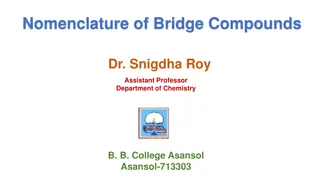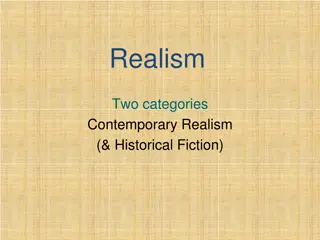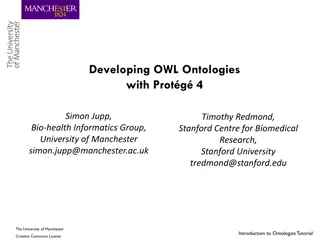The Cinematic Realism in "The Occurrence at Owl Creek Bridge
Exploring the cinematic techniques and realism portrayed in "The Occurrence at Owl Creek Bridge," this analysis delves into the use of point of view, sound effects, and mise-en-scene to immerse the audience in the main character's perspective. The film effectively conveys the harsh realities of war and the predetermined fate, enhancing the viewer's engagement with the storyline.
Download Presentation

Please find below an Image/Link to download the presentation.
The content on the website is provided AS IS for your information and personal use only. It may not be sold, licensed, or shared on other websites without obtaining consent from the author.If you encounter any issues during the download, it is possible that the publisher has removed the file from their server.
You are allowed to download the files provided on this website for personal or commercial use, subject to the condition that they are used lawfully. All files are the property of their respective owners.
The content on the website is provided AS IS for your information and personal use only. It may not be sold, licensed, or shared on other websites without obtaining consent from the author.
E N D
Presentation Transcript
English 11 THE OCCURRENCE AT THE OCCURRENCE AT OWL CREEK BRIDGE OWL CREEK BRIDGE
Whose point of view does this image reflect? What details can you not see when limited to this point of view? Describe what this person is going through in his or her point of view.
Cinematic Techniques Even though this story was originally published in 1891, it reveals cinematic style and includes the following techniques: Close-Up Shots Group Shots Panoramic Shots Fast Motion Slowed Motion Dream Sequences Sound Effects and Quick Cuts Moving Camera Shots
How does The Occurrence at Owl Creek Bridge show aspects of Realism? Harsh Realities of War Fate is Pre-determined Attention to details of the time
Film Analysis (Teacher Notes) In An Occurrence at Owl Creek Bridge, one can clearly see the point of view is effectively applied and imposes a much stronger sense of realism on the audience s view of the main character. Throughout the movie, the camera follows his line of vision thus creating the illusion that the audience is viewing the surrounding environment through his eyes. For example, when the main character is being tied on the plank, the camera shows his feet as if the viewer was looking at them. Similarly, just as he is running through the forest, the camera is moving, making the audience believe they too are running with him. When reflecting on film techniques used to establish point of view, sound immediately comes to mind. When the man is quickly swimming down the creek, the only sounds the audience can hear are the commands of the officer to fire as the shots explode out of the guns. By using this technique, the audience can see how the man is so focused on surviving and escaping the gunshots that the rest of the environment is completely channeled out. This is further emphasized by the use of the song, which sings I m a living man. Again, this reinforces the idea that the man was intent on escaping death and shows his joy at his survival. Although he lived such happiness through a fantasy, this song shows the audience his bliss at the prospect. Mise-en-scene is also used throughout the movie to establish point of view. For example, when the main character is looking at the soldiers surrounding the bridge, the line of soldiers fills the entire screen. This shows the audience their prevalence in the woods and the main character s awareness of the threat. One can also see an example of mise-en-scene when the main character is running towards the woman. Throughout the beginning of the shot, the camera never shows both characters at once. Both characters occupy a shot alone until the final scene. In terms of point of view, it shows the audience not only the woman welcoming him back but the man s intent on reaching her in his attempt to fulfill this fantasy. When they are both in the scene, the fantasy comes to a halt as the plank is dropped and the man is killed. I can honestly say that I did fall for the trick ending. In seeing him run towards the woman at the close of the movie, I viewed it as a hallucination. However, when reflecting upon the movie as a whole, the filmmakers gave the audience several clues that it was, in fact, fantasy, such as the gates that appeared in the path and the light that shined over the woods. By depicting the gates of heaven or the light at the end of the tunnel, the ending should have been no surprise.























